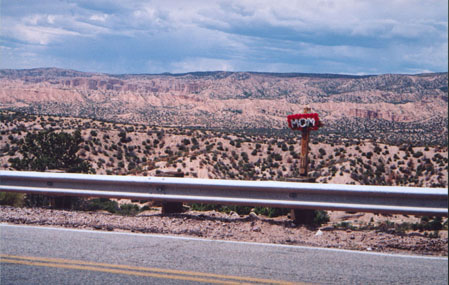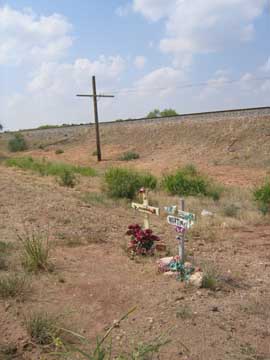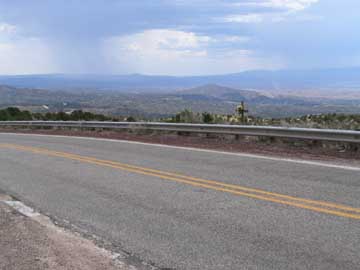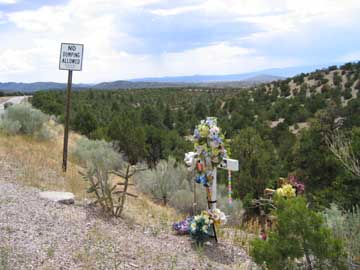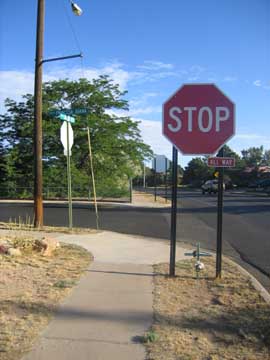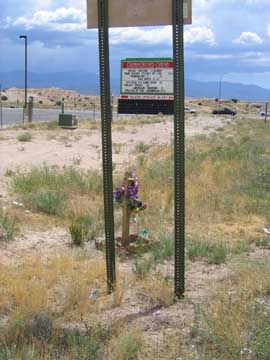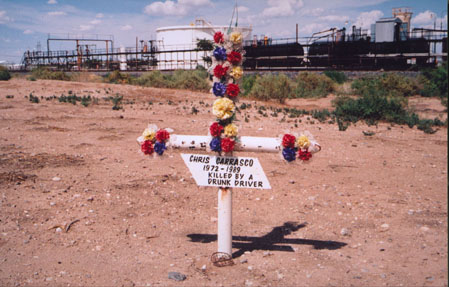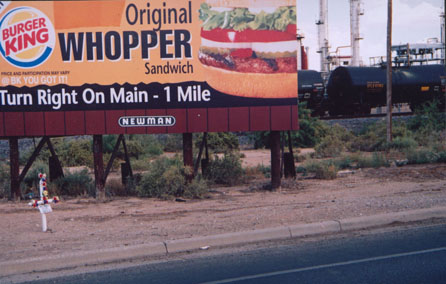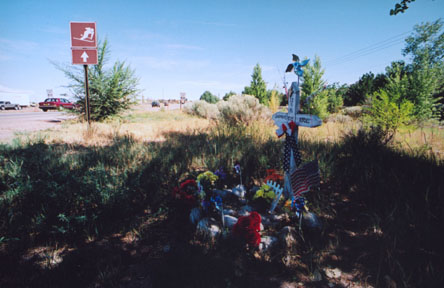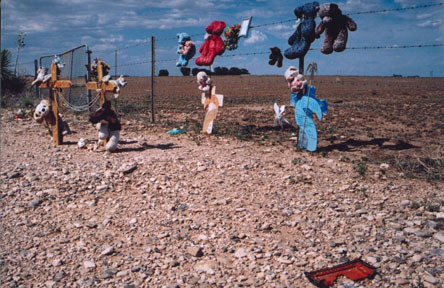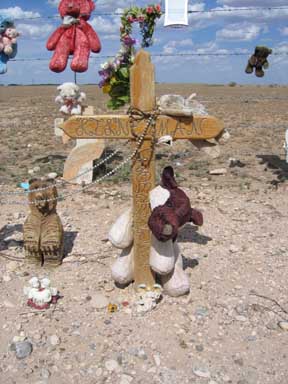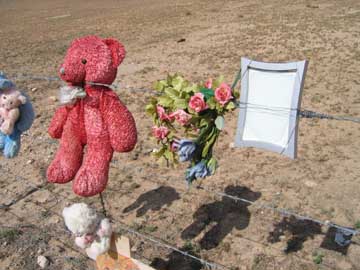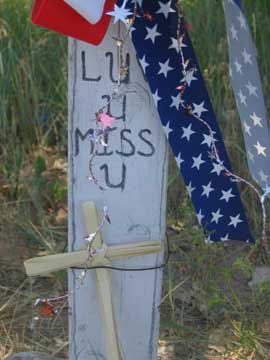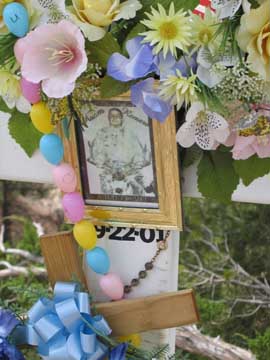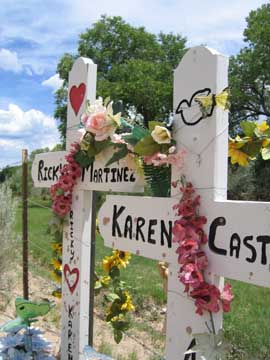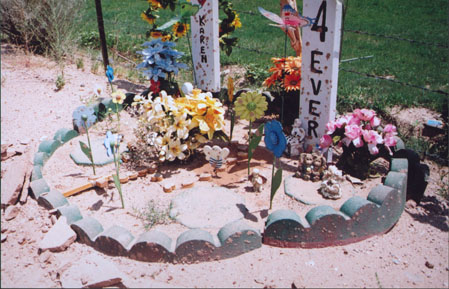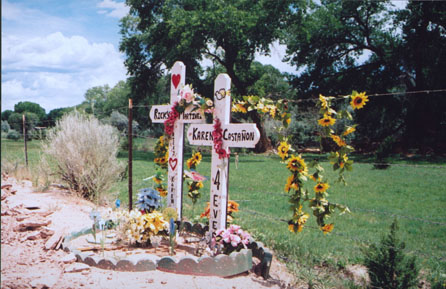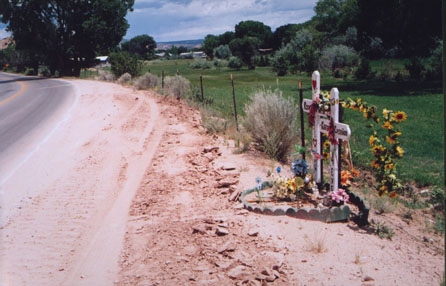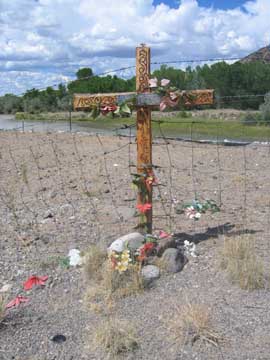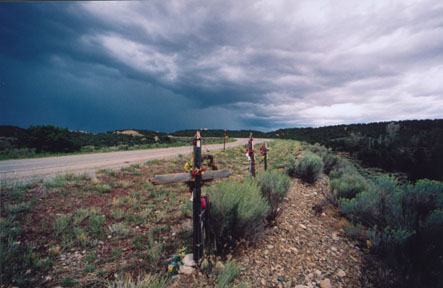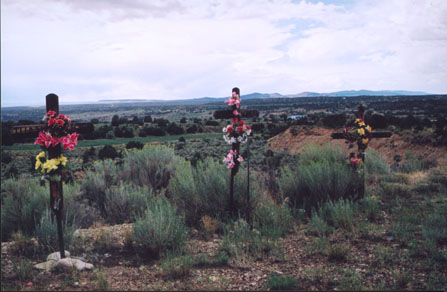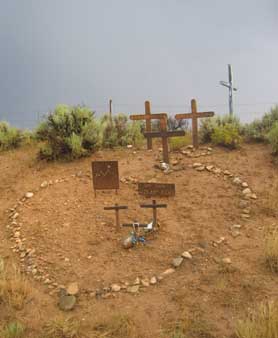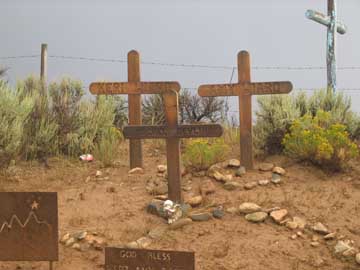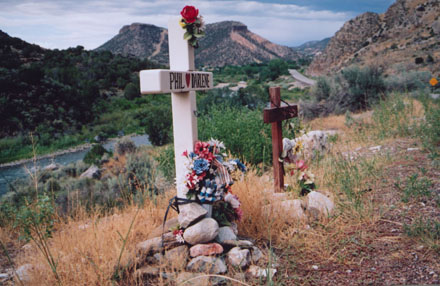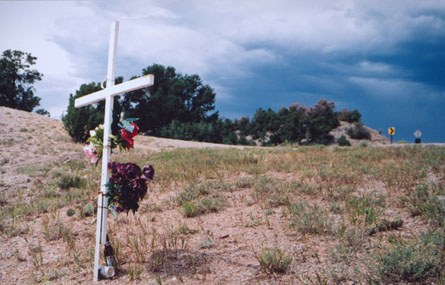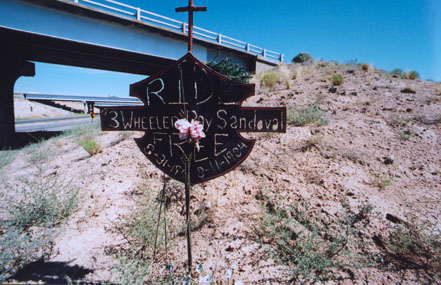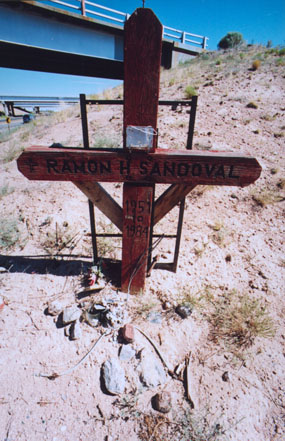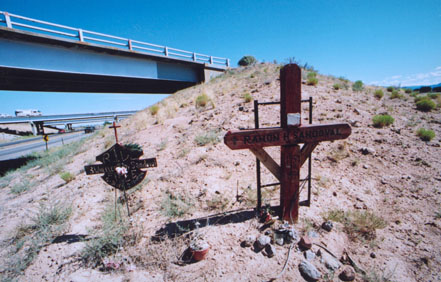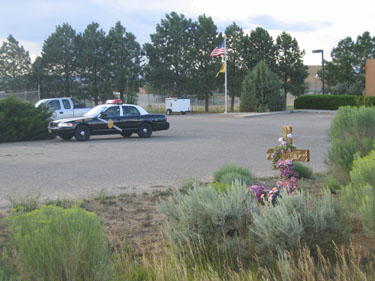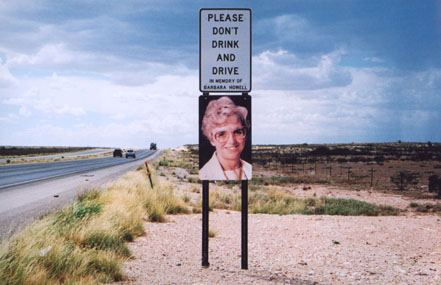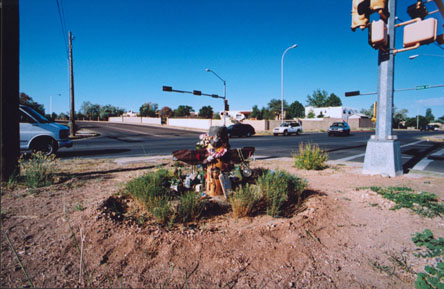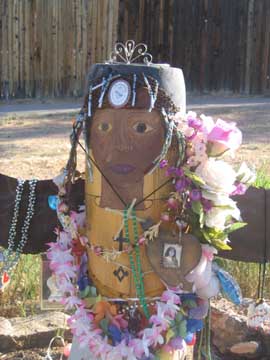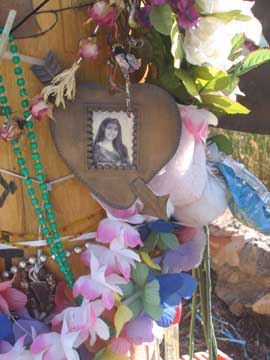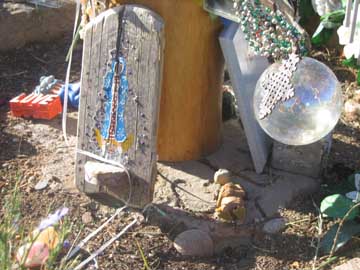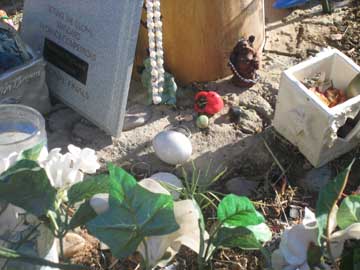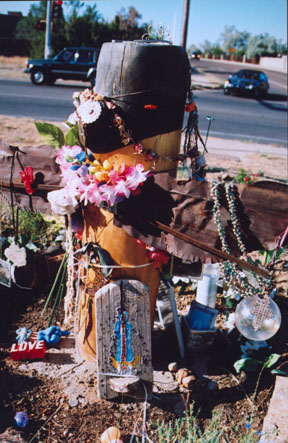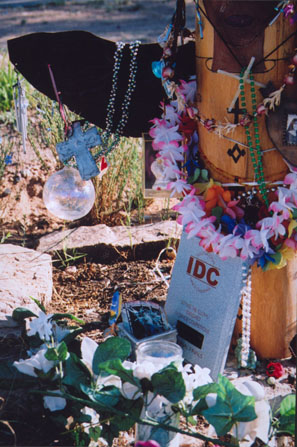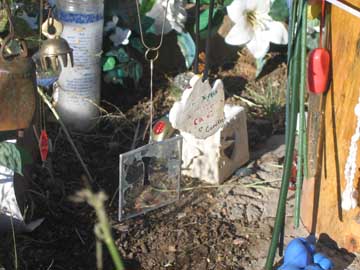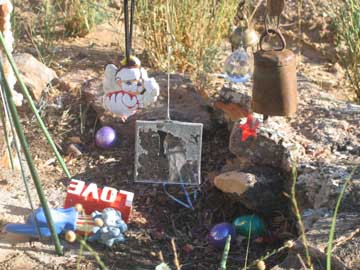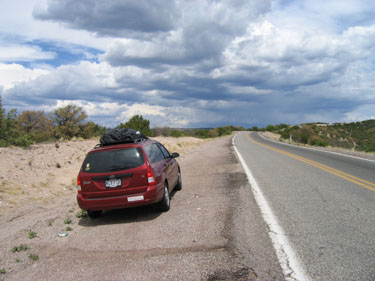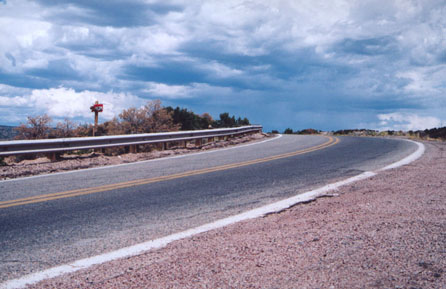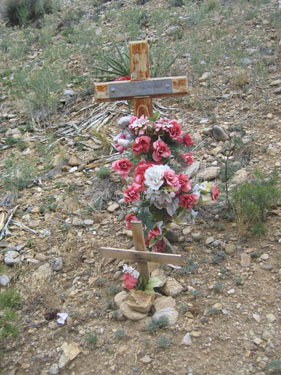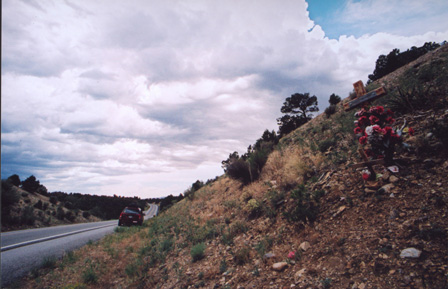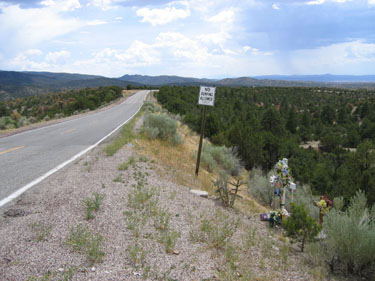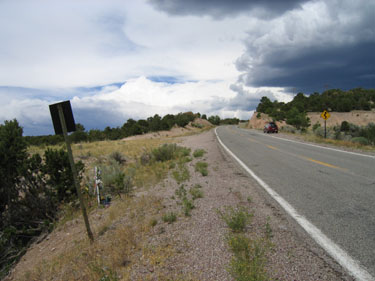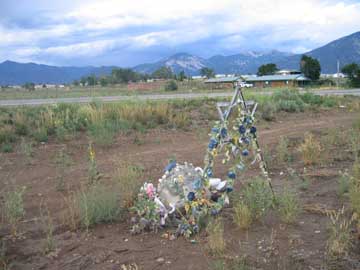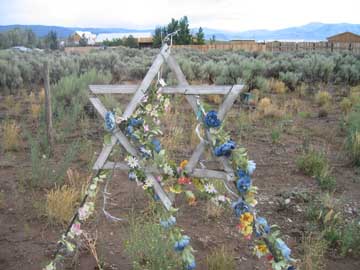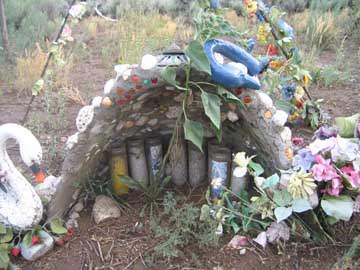In looking there is always something that is not seen, not because it is perceived as missing--as in the case of fetishism--but because it does not belong to the visible.
Victor Burgin, In/Different Spaces: Place and Memory in Visual Culture (1996)
When I am driving doing mobile fieldwork, my eyes are peeled--on the
lookout for anything resembling a cross. Some scream out to be noticed
even at highway speeds.
Others blend into their surroundings,
easily overlooked among other, more institutional road signs.
I find a lot, but I know from recursive traveling that I miss a lot as
well (and see ones once that I cannot find later). I also get a little
jumpy about it: often mistaking fire hydrants for crosses, for instance.
When you are looking for something, you find it--and you find other
things that you can't recognize at all because your head is spinning
with one command: "find the shrine."
It's an odd space to
inhabit. Part of you hopes that you will see no sites at all, that no
one else has died, that everything is going to be OK for just a moment
or a mile longer. Part of you hopes there are more--for "research
purposes." And unfortunately, on the roads of Northern New Mexico,
there are lots of opportunities to feel the conflict in your gut.
* * *
The first few times I stopped at memorials, I felt horribly
self-conscious, almost shameful. If you have ever stopped at a
stranger's memorial, you know what I mean. If you haven't, I hope some day you
will. You feel as though you have been suddenly transported into a
stranger's bedroom, and there are people watching you look through other
people's stuff.
There I am on the side of the road looking at, photographing, and
sometimes touching the intimately symbolic objects of a person's life,
and I don't know who they are or how they lived or how they died.
And yet, these are not bedrooms--or even living rooms--but spaces on the
side of the road visible to all who drive by.
Whatever else we
might see communicated by the memorials, one thing rings through
clearly: that the people who attach crosses and
flowers to fences and trees and guardrails and build grottoes and
shrines along the right of way think that they have the right to do
so--think that there is room for them (or at least should be room
for them) in public space.
The memorials say, "I want to carve out a space in
the landscape, and thus the culture." As folklorist Alberto Barrera
says, "roadside crosses are a way of saying to the departed loved one,
'I will remember you always, but I also want for the community to
remember you as they come face-to-face with the cross on the roadside.'"
This is particularly the case in New Mexico. In some states--Texas, for instance--it is
illegal to construct and maintain a roadside memorial, but in New Mexico
the state has embraced the practice, using it in billboards and other
official public media DWI messages. There is even a descanso
at the edge of the parking lot at the State Police headquarters in Taos.
Even here, though, the state has followed other states in
offering an official DOT roadsign to memorialize drunk driving victims.
The personal sites mark space in a different way, creating a space for
private grief to be memorialized in an already circumscribed public
landscape, but what do they "say" to those who drive by? What actually
is there at the site and what/how does it communicate and to whom? There
are so many things there at some of the sites that it is overwhelming.
Are the sites themselves so "multiplicitous" that they are rendered
mute? Or is it that they are so personal that they are illegible to
those of us "outside the code"? You know the objects are meaningful to
someone, but what do they mean to you the visitor? These are texts open
to public consumption, but not necessarily constructed for it. The
content of the message--especially the story of how the person died--is an
absent presence, sometimes simply an absence.
On the other hand, when you find yourself face-to-face with a cross
emblazoned with silk flowers spelling the word "MOM," you can't
help but notice the subjectivity of it: it pulls you in and pushes you
away at the same time, saying, "This looks familiar and intimate, but it
really isn't." This is no objective statement about a person with a
name you and I could say and be talking about the same person. This is
no historical marker put up by the state to tell public history. This
is constructed by someone who is radically situated and located--a
person who defines themselves in relation to the person who has died.
This is the place where someone's Mom died.
And yet, the flower arrangements themselves are standardized. Any
person with a mom can go into the store and see the exact same Mom
arrangement and think it will provide a fitting tribute to their own
Mom.
And that is exactly where my mind is now on the side of the road, where
I see the distinction between the two main functions of the
memorials--to remember and to caution--collapse. As much as I know my
own mom is alive and well, I see the Mom cross and see it as my own mom.
Or I see it as a memorial my daughter Anika and I might put up for
Danielle if she were to die on the road.
And this last association is not at all random. You see, I am not alone
on this fieldwork trip. Except for a day and a half while we are based
in Santa Fe--when I am out working and they are playing in
town--Danielle and Anika are right there with me the whole time, a
barely absent presence always at least metaphorically and sometimes
literally at the edge of the frame of my photographs.
Mobile fieldwork is always intense and surreal, but it is particularly
surreal while you are also doing a family vacation with a two year-old:
Each site we see generates an instant cost-benefit analysis based on a
quick glance at the memorial: what impact would stopping have on
everyone else? Is it too soon for another stop? Is everyone maxed out
on memorials for a while? Is this site really worth a stop?
When we are moving, we trade off driving and playing with Anika in the
backseat. When Danielle is driving, I am in the backseat playing with
Anika. I hate to admit that it takes me a while to learn to trust
Danielle to see memorials and tell me about them.
When we stop, we say something like, "Anika, Daddy is going to stop to
take some pictures."
And Anika responds, "CHEESE!"
When I am driving and Anika is napping, Danielle is usually reading,
creating a space for herself within the car, enjoying the moment of
silence between bursts of toddler energy. I am doing something similar.
I try to make mental notes of milemarkers in case we reach critical
mass and the conditions are right for turning around at the end of the
nap. Mostly I just talk to myself about letting go, or about what I've
gained instead.
The car looks a little like our back room at home, and so do our
activities: Living out of our car, dwelling in motion, we have taken our
home on the road and made a home on the road. Distinctions between what
we are researching and what we are playing and what we are thinking and
what we are saying and what we are
dreaming--they all bleed together.
Danielle and I have begun to call the trip "Winnie the Pooh and
Descansos Too."
* * *
Anika is awake after a rare long nap.
"I thought you had him."
"I did, until Anika fell asleep."
"Oh, shit."
Winnie the Pooh is missing.
We finally figure out that we left him at a place fifty miles on the
other side of Taos from where we are now. Driving the route again, I
notice a memorial I missed the other two times I drove by that day.
When I see it, I forget about my frustration with Pooh and am yet again
happy that Anika is with me. It is about fifty yards up the road from
a massive three-cross site I had stopped to photograph.
The site I missed is unique, though: instead of crosses, this one features a
Star of David. The wood on the Star is weathered and gray,
which makes it blend into its surroundings. But this is only one reason
I missed it. I was so busy looking for roadside crosses that I looked
right past it--not just once but twice. What else have I not seen?
What else do I not understand?
Previous | Next>
All Design, Photography, and Text © 2004
by Bob Bednar
Department of Communication Studies
Southwestern University
Georgetown, Texas 78626
(512) 863-1440
bednarb@southwestern.edu
